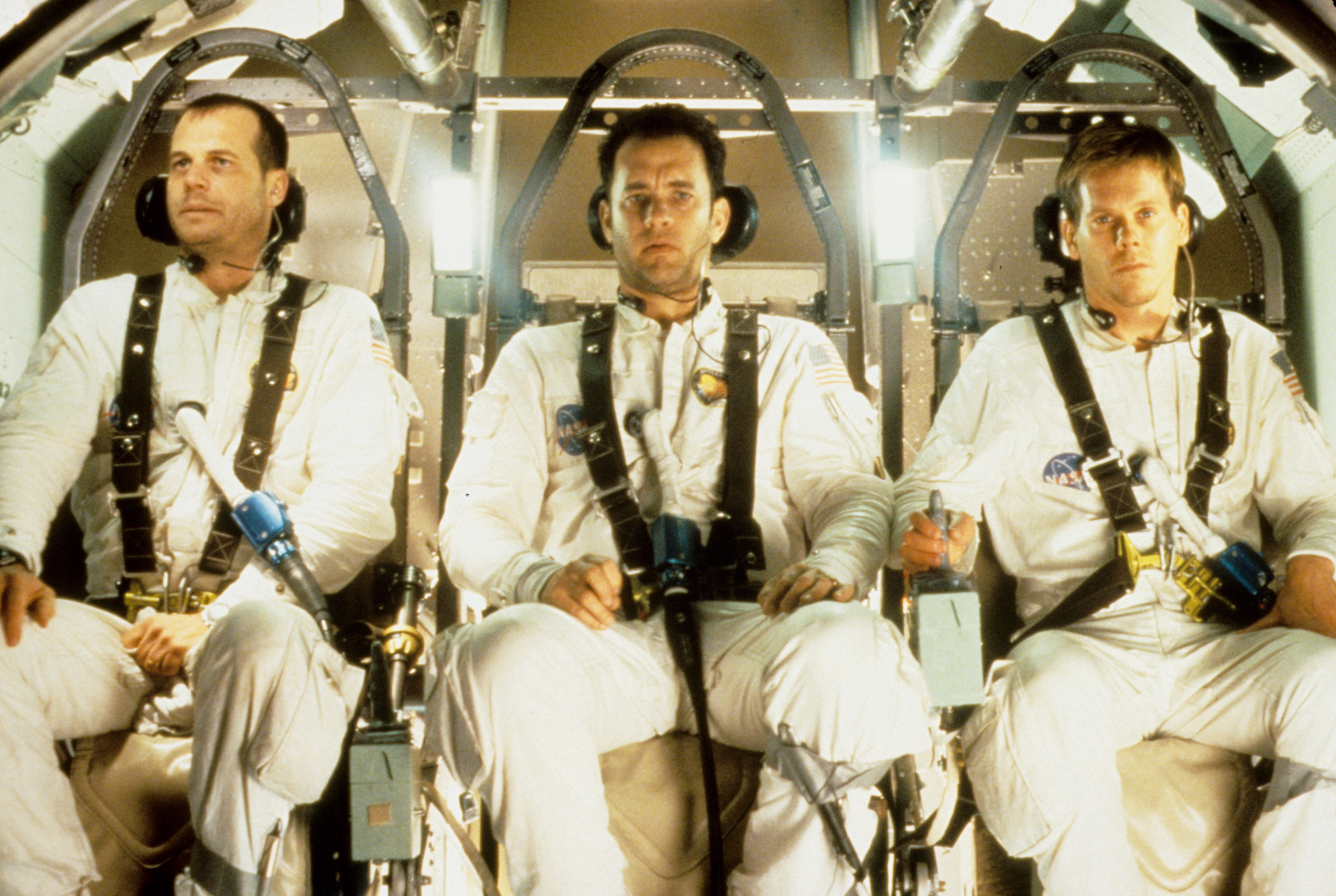Director Ron Howard and his star cast take us on a journey to the moon that ends in disaster. The film impresses with its realism and, thanks to Steven Spielberg, this also applies to the depiction of weightlessness
“Houston, we have a problem.” Even those who haven’t seen Apollo 13 are probably familiar with this sentence. The adventure with Tom Hanks tells the story of a true space catastrophe that is almost documentary-like and was nominated for nine Oscars.
What is the astronaut drama Apollo 13 about?
Houston, 1970: The mission to the moon is already under an unfavorable star when Jim Lovell (Tom Hanks) and his team, consisting of Fred Haise (Bill Paxton) and Ken Mattingly (Gary Sinise), are unexpectedly asked to take over the rocket flight. Shortly before departure, Mattingly falls ill and is replaced by the inexperienced Jack Swigert (Kevin Bacon). At first everything seems to be going well, but on the third day Lovell makes the famous radio call: “Houston, we have a problem”. From then on, the crew’s fight for survival begins.
The true story of the Apollo 13 flight is based on Jim Lovell’s memoirs, which he wrote down together with Jeffrey Kluger in the book Lost Moon. Director Ron Howard filmed the story extremely realistically and takes his time to tell the prehistory and training with precision before the life-threatening catastrophe in space
Steven Spielberg gives a crucial tip for the filming
Back in the early 90s, Steven Spielberg proved that he could use robot models and computer effects to bring dinosaurs to life and make them look deceptively real. But when Ron Howard wanted to use film tricks to artificially depict weightlessness, Spielberg of all people advised him against it. He almost urged his colleague to shoot in real weightlessness

Howard revealed this in the magazine of the Directors Guild of America . Of course, the film crew couldn’t simply fly into space, but he found a possibility while brainstorming with Steven Spielberg. The KC-135 airplane ascends and descends like a roller coaster, creating 23 seconds of weightlessness. After the cast and crew had undergone extensive tests and training, NASA allowed the filming to go ahead.
A full four hours of footage was shot in the machine, which was probably not the most pleasant experience for those involved. The affectionate nickname “vomit comet”, which they gave to the process, probably says it all. But the tough shooting was worth it, because the result is a realistic film that has set the standard for subsequent space adventures.

